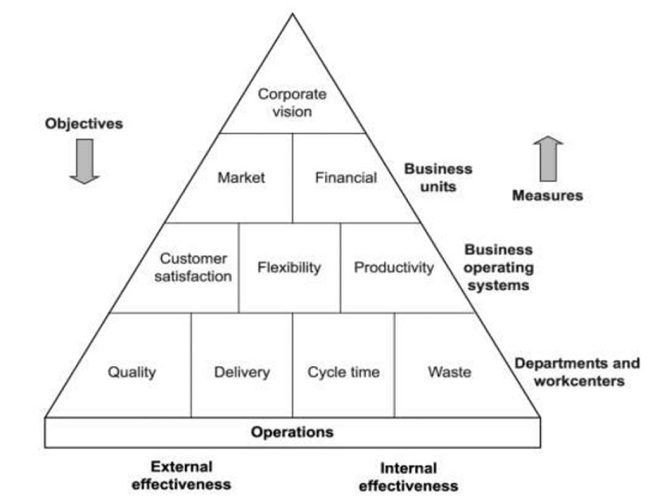
 Data Structure
Data Structure Networking
Networking RDBMS
RDBMS Operating System
Operating System Java
Java MS Excel
MS Excel iOS
iOS HTML
HTML CSS
CSS Android
Android Python
Python C Programming
C Programming C++
C++ C#
C# MongoDB
MongoDB MySQL
MySQL Javascript
Javascript PHP
PHP
- Selected Reading
- UPSC IAS Exams Notes
- Developer's Best Practices
- Questions and Answers
- Effective Resume Writing
- HR Interview Questions
- Computer Glossary
- Who is Who
Leading with Purpose: Aligning Values and Vision for Sustainable Business Success
Introduction
Instead of attempting to be all things to all people, a good purpose concentrates on the unique contribution the business brings to society and the wider world. If you are a business owner you will realize those businesses which succeeded, did so because they created, coordinated, and integrated a purpose and strategy to move toward a sustainable economy. Any leader working to combine their organization's mission and strategy with a sustainable economy should find inspiration and knowledge in this.

Why is Identifying the Purpose of Any Organization Critical for its Success?
In a corporate environment that is continually changing, organizations are well-positioned for long-term success if their purpose or mission is clearly defined and supported by values. These organizations with distinct missions and purposes know why they exist and how they intend to accomplish their goals. These organizations are well-equipped to deal with any kind of disruption or change from their partners, consumers, and community members. The need for companies to navigate these market forces has never been greater due to the intense competition and rapid pace of changes they encounter.
When deliberately created and successfully implemented, purpose, mission, and values are strategic business components that serve as a roadmap for organizations, assisting them in staying on course and working toward attaining their long-term objectives. They support the formation of customer loyalty, employee motivation, and company decision-making. Though it is obvious that the purpose or the goal of any organization is the very foundation for its success, yet over time at times this tends to fade away. But for leading the business the purpose and goal always have to be in the forefront at all times.
Organizational Purpose is a Critical Element for Success
An organization's purpose explains why it exists. Businesses with a purpose are dedicated to working toward goals that go beyond shareholder value and profit. They have an impact on a larger community than just the people who are directly impacted by their firm (such as clients, staff members, and shareholders). Companies with a purpose strive to improve society, frequently through fostering a more moral, just, and sustainable society. Their existence is motivated by the greater good.

Along with the purpose though the mission and values of the organization are very important for the organization's success as well.
The Mission of a Company
A company's mission statement may also explain why it exists. Companies with a clear mission prioritize generating value for their direct stakeholder groups, such as clients, staff members, and shareholders. Companies with a clear mission utilize it as a roadmap to carry out their objectives. They are there to favorably impact stakeholders, which is why they exist.
Values
An organization's values specify its guiding principles and the conduct it has decided to uphold daily. Values establish the standards for how employees should perform when interacting with clients, co-workers, and business partners. Values convey what is significant to the business and give decision-making clarity and direction. Some businesses interchangeably refer to their values as guiding principles, company principles, or company beliefs.
It is great to identify the purpose, vision, and values, but aligning them to ensure the larger interest of the business is met is equally just as important. It is all the more relevant considering the current environmental concerns. Let us see why this is important and how to achieve these.
In today's world, when environmental and social concerns significantly influence consumer behavior and the general corporate landscape, it is critical to align values and vision for sustainable company success. A business can experience long-term success while also having a good effect on the environment and society when its beliefs and vision are in line with sustainability principles. To align values and vision for sustainable corporate success, keep the following in mind
Vital Steps for Sustainable Growth of Any Business
Clearly defining your values
The first step would be to establish your company's core principles. Dedication to sustainable practices, such as environmental stewardship, social responsibility, and ethical behavior, should be reflected in the company ideologies and practices. A basis for decision-making and a direction for your company toward sustainable actions by outlining these values are necessary.
Integrating Sustainability into the Vision
Make sure that the future direction of your firm includes sustainability as a key component. This entails developing a business strategy that balances the needs of society and the environment with those of the bottom line. Your company's vision should explain how it intends to maximize benefits for all stakeholders while minimizing harm to the environment and society.
Create defined, quantifiable sustainability goals
The goals must be in line with your beliefs and vision to establish clear sustainability objectives. These objectives can cover a variety of topics, like cutting carbon emissions, developing sustainable supply chain methods, fostering diversity and inclusion, or helping local communities. Clear objectives give your company direction, let you monitor your progress, and show accountability.
Stakeholder engagement
Promote alignment and a common understanding of sustainability by interacting with internal and external stakeholders. Customers, suppliers, investors, and local communities are all included in this. Ask for their opinions, address any issues they may have, and include them in the selection of sustainability-related initiatives. To achieve your sustainable goal, you can inspire passion and teamwork by establishing a sense of shared purpose.
Creating clearly defined goals
Create defined, quantifiable sustainability goals that are in line with your beliefs and vision to establish clear sustainability objectives. These objectives can cover a variety of topics, like cutting carbon emissions, developing sustainable supply chain methods, fostering diversity and inclusion, or helping local communities. Clear objectives give your company direction, let you monitor your progress, and show accountability.
Conclusion
To conclude, we can say that it takes time to successfully align principles and vision for sustainable corporate success. It necessitates dedication to constant innovation, teamwork, and flexibility. You may build a strong, successful firm that contributes to a sustainable future by incorporating sustainability into its core values. Thus, when it comes to sustainability goals aligning the values, and vision is vital and plays a critical role in them at all times.

